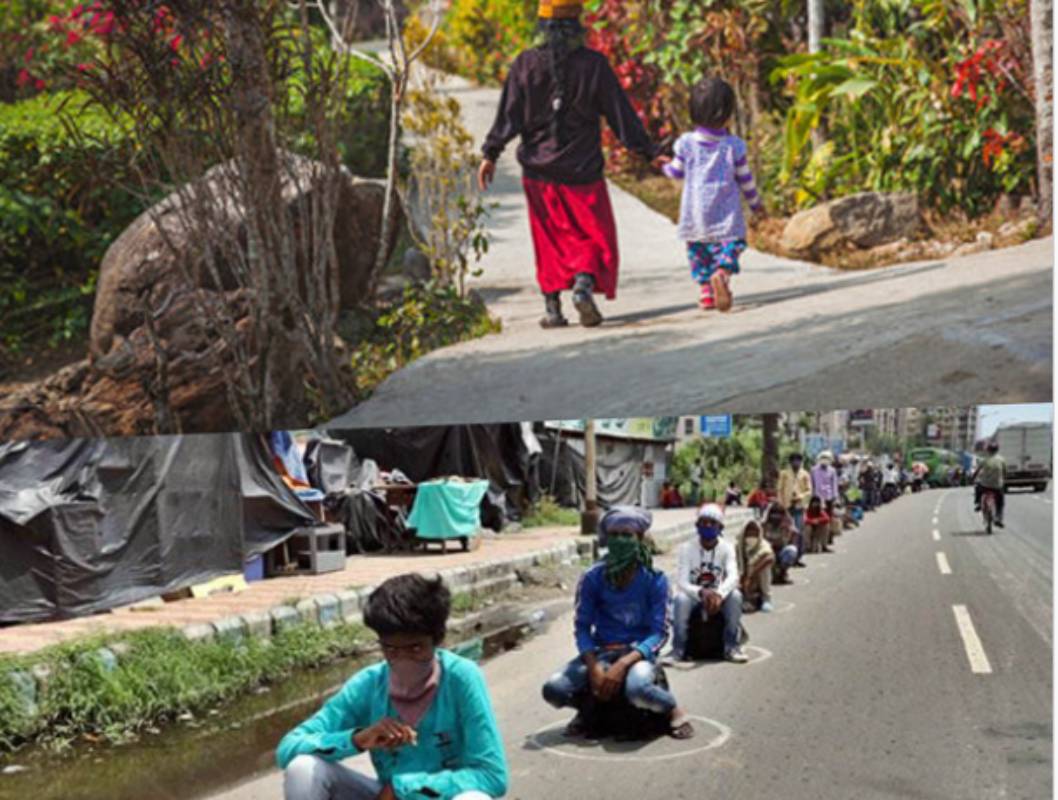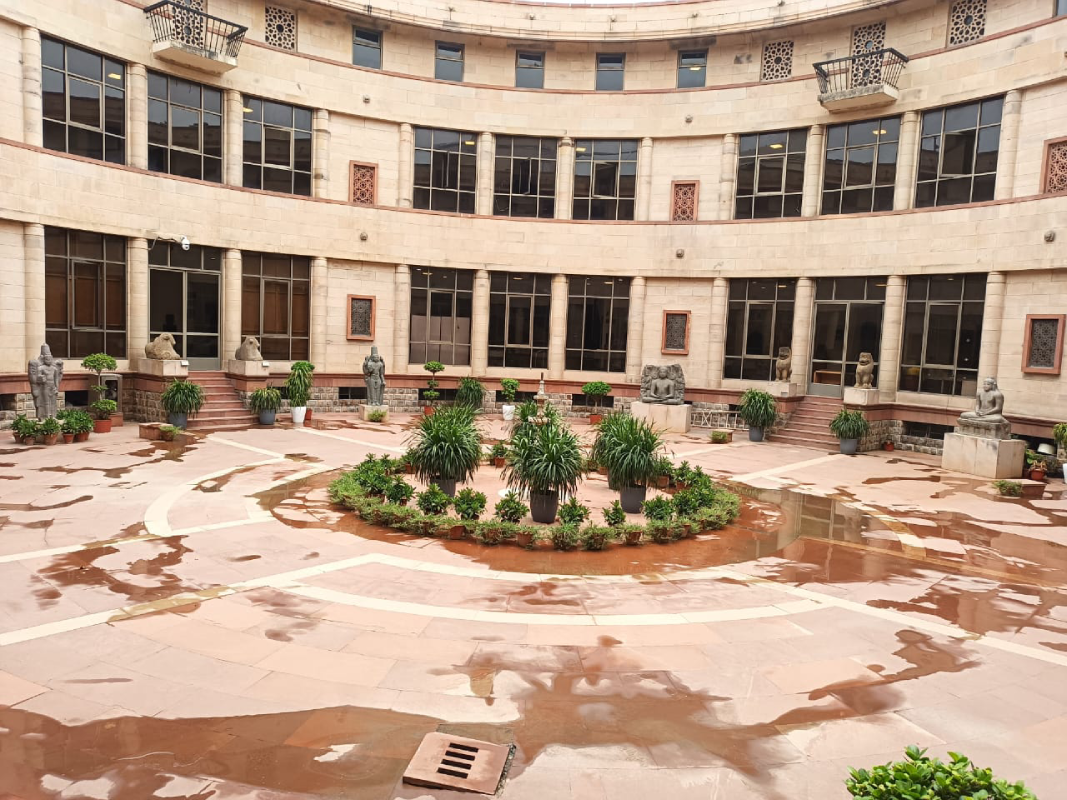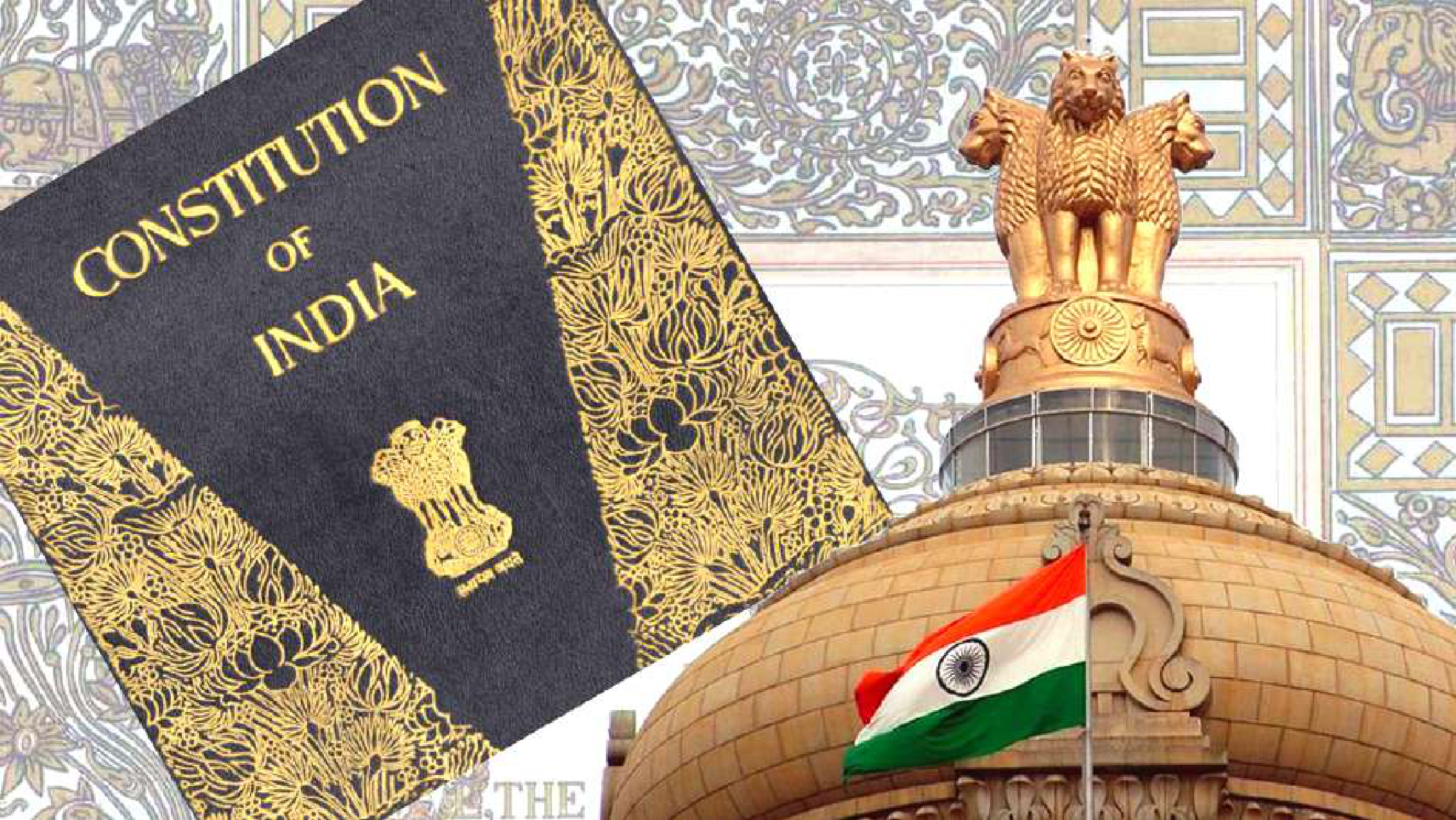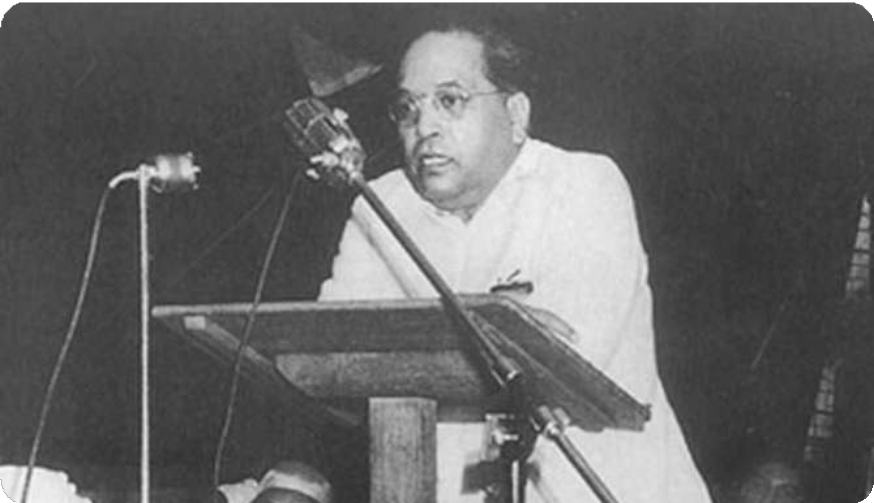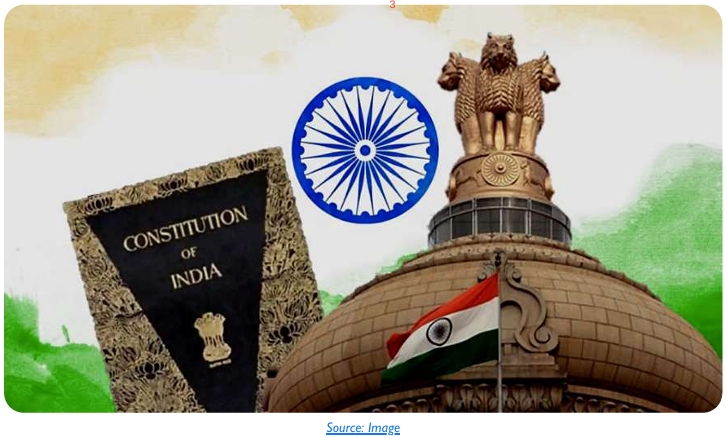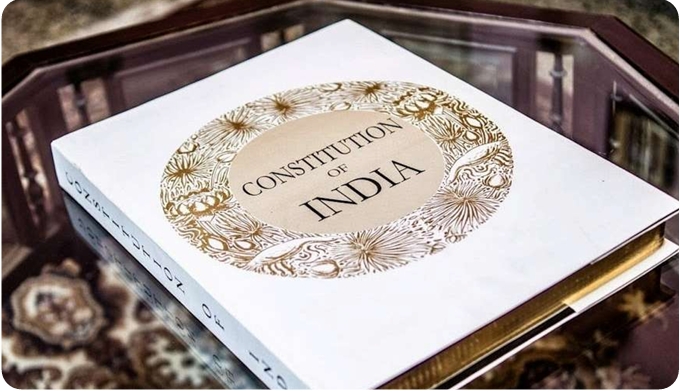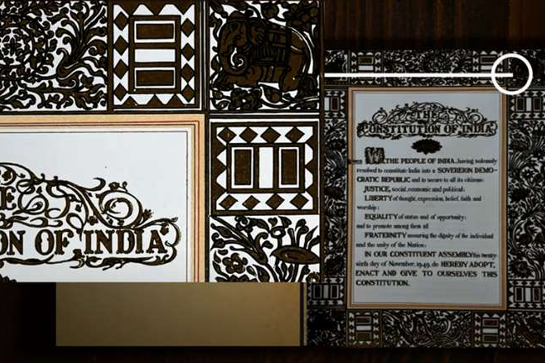Introduction
A nation is considered civilized and evolved if, among other things, the rule of law prevails at all times, particularly when there is a crisis. Has the rule of law prevailed in India in the ongoing crisis caused by the Covid pandemic? This is a question we examine in this article.
There are essentially two Acts that applied to the Covid crisis. The first is the Epidemic Diseases Act (EDA), 1897 and the second is the Disaster Management Act (DMA), 2005. Of course, some of the provisions of the Criminal Penal Code, such as Section 144, were also applied. During the crisis, some new Ordinances were promulgated. In an addition, there were rulings by various High Courts and the Supreme Court on cases brought in front of them, which had a bearing on the legal framework.
In this paper we analyse the response of the Indian central and state governments in tackling the COVID crisis in terms of the provisions of the legal framework. We also examine the provisions for sharing of authority and responsibilities between the Centre, the States and Local levels of government (the Municipal Bodies in urban areas and the Gram Panchayats in rural areas).
Epidemic Diseases Act, 1897
Colonial powers realised that in order to govern efficiently, it was crucial to keep both the subjects and the colonisers in good health. There were several reports of plague outbreaks in the 19th century, the most significant of those was when an epidemic of the bubonic plague broke out in Bombay. The plague spread across almost the length and breadth of the country with the final toll in 1903 totalling about two million people according to state records, though the actual toll is purported to be much more.
Due to immense pressure on the British imperial government of India to control this emergency, a Plague Commission was set up in 1896. The report from the commission surmised that essential preventive measures were required to disinfect and evacuate infected places, to control mass transit altogether as well as improve sanitary conditions. The broader suggestion was to strengthen public health services and develop laboratories (Mushtaq, M., 2009). Eventually, the Epidemic Diseases Act was passed in 1897, wherein the Governor-General of India conferred special powers to local authorities to implement the necessary measures for control of epidemics. Colonial Might was employed to forcefully segregate infected people, disinfections, evacuation and in some cases, even demolitions of infected places was undertaken while dealing with the outbreak of the Bubonic Plague until it eventually ended in 1903.
The succinct bare Act altogether comprised merely four sections wherein the first section primarily dealt with the extent and applicability of the Act. The second section entailed that the state governments could formulate guidelines and regulations if the existing legislative framework was deemed insufficient to deal with an epidemic. Another section was added later, regarding the powers the central government yielded to inspect ships and vessels. The third section included the penalising provisions which entailed the penalty for disobeying regulations or orders made under the Act in cognizance of section 188 of the Indian Penal Code. Section 4 essentially states that no suit or legal proceedings would be undertaken against a person who undertakes or intends to undertake, in good faith under the provisions of the EDA, 1897.
What became increasingly evident in specific instances of anti-plague measures undertaken by the colonial regime towards the end of the nineteenth century , was that the colonial health policy was aimed at colonising so to say the ‘Indian body’ thoroughly (Rai, S, 2020). The EDA, 1897 essentially enabled the colonial authorities and gave them legal sanction to detain plague suspects, destroy or demolish infected property and dwellings and examine people at will. This resulted in numerous unfair and dubious steps which were ultra vires or in contravention to the actual intent of the Act. Wherein innocent and unsuspecting citizens were picked up at will, property was destroyed among other things. These pervading and far-reaching powers emanated from Section 2 of the Act which handed over immense albeit temporary powers primarily to frame regulations and guidelines by the state during times of an epidemic, which would have to be abided by the public. The draconian treatment meted out to Indians led to several riots against the archaic Act’s provisions which enabled such behaviour by colonial authorities (Rai, S, 2020).
The EDA, 1897 has been applied on several occasions in the past, for instance to deal with the plague in Surat (1994), Swine Flu in Pune (2009), dengue and malaria in Chandigarh(2015) and Cholera in Gujarat(2018), among others. However, unlike the current scenario with regards to dealing with COVID, the act has been applied to deal with primarily local domestic areas and didn’t have to withstand the complexities of international transmission. Along with the fact that the scale of social distancing employed during COVID is completely unprecedented, in addition to the prolonged and indefinite national lockdown.
In the present scenario of dealing with COVID-19, the central government issued advisories to several states and union territory to invoke the Epidemic Act. In response to these advisories, several state and district authorities exercised their powers under the Act to frame state-specific COVID-19 regulations. The regulations that were promulgated by various states such as Maharashtra, Delhi, West Bengal among others were to do with medical screening of individuals, isolation and quarantine measures, compulsory disclosures of travel history, restrictions on print and electronic media regarding avoiding the spread of any rumour or unverified information regarding COVID-19, along with restrictions on private laboratories from conducting tests, etc. (Menon CS, 2020).
Furthermore, if a case of COVID-19 has been reported in a particular geographical area, the regulations have also awarded special powers to authorised persons to undertake certain measures, which include the sealing of the area in question, completely banning any kind of movement of the population from the containment area, closure of schools, offices and banning public gatherings, and curbing vehicular movement in the area (Menon CS, 2020).
While being altogether silent on the rights of citizens, the Epidemic Diseases Act, 1897 also does not clearly specify the situations and procedure during the course of which the respective authorities can curtail the autonomy, privacy, liberty and the rights of Individuals. The provisions underlining the punishment to be meted out to those who go against the provisions of the Act are incredibly outdated owing to the context of the time. A thousand rupees or six months imprisonment would seem like an extremely mild punishment during times of a pandemic like COVID-19. Due to the limited scope of the de jure provisions of the original Act, it has come upon various state governments and subsidiary players to adopt de facto principles.
The de facto principles essentially imply steps such as the mandatory screening of individuals, isolation, quarantine measures and so on. For Instance, the State of Maharashtra on the 14th of March issued guidelines regarding the prevention of mass social gatherings, isolating those showing symptoms of the virus, etc. State governments have also come under the scanner for issuing controversial diktats such as banning the dissemination of information relating to COVID-19 on social media without cross checking the legitimacy of the information in question from the State government along with getting the prior clearance from the Commissioner of Health services.
Critics have deemed this particular step to be a violation of the Right to Free Speech and Expression that is guaranteed under Article 19(1)(a) of the Indian Constitution. However, during such times this step can pass off as a reasonable restriction owing to the fact that potentially unverified and unsubstantiated news even intended without any malice can cause widespread pandemonium in times of a crisis such as COVID-19.
Disaster Management Act (DMA), 2005
Due to the unprecedented disastrous consequences of the Tsunami of 2004, the question of disaster management again arose in public discourse. It was argued that the country required a preventive and long-term approach to disaster risk management since the focus till then was primarily on post-disaster relief and rehabilitation. The need of the hour was to focus on mitigation and reducing risks along with a delicate balance between mitigation and managing a disaster. Thus the Disaster Management Act, 2005 was enacted by Parliament.
The Act entailed a detailed action plan right from the central government to the district and local levels to draw, implement and execute a containment and management plan. The national authority headed by the Prime Minister would primarily be the nodal body which would necessarily underline all the plans and policies in assistance with secretaries, etc. The state disaster management, in turn, headed by the Chief Minister and the district management authorities under the district magistrates would be given their individual autonomy. The Act contains provisions on minimum relief which has to be provided in terms of medicines, shelter, water, food and so on. It underlines a need for a holistic effort through various wings of the government to ensure a prompt response to disasters. A chain of responsibilities and duties all the way to the local authorities has been clearly established as well. The Act finally recommends the setting up of a national disaster response force for a specific and novel response to a threatening disaster situation.
Section 22(2)(h) of the Act permits state authorities and executive committees to give directions to government departments on steps to be undertaken as a response to a threatening disaster.
Under Section 25 of the Act it is mandated that every state government establish a District Disaster Management Authority. The Authority will include either the Collector of the district who will act in his capacity subsequently as the Chairperson of the District Authority. Under Section 30 this District Authority will act in accordance with the guidelines laid down by the National and State Authorities in dealing with district planning, coordinating and implementing disaster management.
Sections 24 and 34 give state committees and district authorities the power to control and restrict the movement of vehicular traffic or people from or within a vulnerable or affected area. The District Authorities can henceforth undertake several such steps which are deemed necessary for mitigating the extent of the disaster and bringing it under control. Essentially, the onus for monitoring and prevention measures at the ground level falls on the district authorities in terms of enforcing central and state diktat.
The Act also entails establishing various authorities and committees such as the national disaster management authority, state disaster authority, district authorities, advisory committees and subcommittees which on the whole, fails to serve any legitimate and practical purpose (Sarma, A. and Sarkar, S., 2006). On the contrary, the very process of setting up such committees is cumbersome, since so many committees defeat the whole purpose of a proactive and adequate response to disasters. The limit for number of members for the disaster management authorities is fixed at 10. However, no qualification is deemed necessary by the Act. The eligibility of members should be of significant importance at the national level; however owing to the provisions of the Act, there is scope for the politically motivated appointments of unqualified persons to such committees.
Arguably the most striking aspect of this particular legislation is the provision that the actions of national, state and district authorities cannot be challenged except in the Supreme Court or the High court of the respective jurisdictions. This essentially offers a considerable degree of immunity for officials and can result in several aberrations with vested interests which are in contravention to the actual tenets of the Act.
Another provision imposes punishments for false claims against the state and officials. Misplacing or even losing documents in disasters and pandemics is a common and recurring phenomenon which would result in claims for compensation being rejected and in turn being punished for the same.
Owing to the tenets of the Act, the Central government irrespective of any particular law in force can issue any sort of directives to any authority anywhere in India to facilitate and even assist in disaster. Such directives have to be followed by Union Ministries, State governments and State Disaster Management Authorities. The national lockdown was imposed under the DMA, 2005 as per order dated 24-03-2020 of the NDMA, which stated ‘to take measures for ensuring social distancing to prevent the spread of COVID-19’. In accordance with Section 6(2)(i) and Section 10(2)(l) of the DMA, 2005.
Furthermore, Section 10(2)(l) of the DM Act which in itself empowers the National Executive Committee(“NEC”) to act in pursuit of providing guidelines for or even give directions to various ministries and the central and state levels with regards to measures to be taken by them in retaliation to any incoming disaster scenario or an actual disaster.
The nationwide lockdown and other various steps that are undertaken to tackle COVID-19’ can withstand judicial scrutiny owing to the fact that the lockdown among other rules have been advised by health experts. Even the National Disaster Management Guidelines in 2008 issued by the NDMA which stated various steps along the lines of social distancing “Spread of communicable diseases in many conditions could be controlled or prevented by reducing direct contact with patients. Social distancing measures, if required to be implemented in the context of an epidemic, maybe voluntary or legally mandated. Quarantine refers to not only restricting the movements of exposed persons but also the healthy population beyond a defined geographical area or unit/institution (airport and maritime quarantine) for a period in excess of the incubation period of the disease” (National Disaster Management Guidelines-Management of Biological Disasters, 2008).
On March 29, 2020, in consonance of the powers accorded from Section 10(2)(l) of the DMA, 2005, the Home Secretary issued an order inter alia/or among other things which directed all employers to make payments of wages to their employees without any sort of deduction. Along with directing landlords not to demand rent for one month from workers. The violation of such directives would invite penal provisions under the DMA, 2005 since the directives were mandatory and not advisory. On March 27, 2020 the MHA directed all states and union territories to provide support to migrant labourers and other workers in the form of food, shelter and amenities. On March 28 and 29, the MHA issued advisories emphasising the need for adequate arrangement of shelters and food for the poor. Such advisories and steps to states and employers were sourced from Section 10(2) of the DMA, 2005.
Under Section 10(2) of the Act, the National Executive Committee headed by the Secretary, MHA is required to assist the NDMA in the efficient conduct of its responsibilities. The NEC is supposed to prepare a plan under section 10(2)(b) of the Act and get it approved from the NDMA along with guidelines for preparing disaster management plans by different ministries. The NEC was also supposed to review the implementation of plans prepared by the respective ministries in question. However, the NEC did not prepare a plan to be submitted to the NDMA for approval nor did the NEC ensure several ministries prepared disaster management plans. The NDMA, chaired by the Prime Minister in a sense ended up delegating its responsibilities to the MHA to issue directives at free will, which is in gross violation of the provisions of the Act.
Under Section 12 of the DMA, the NDMA is mandated to “recommend guidelines for the minimum standards of relief to be provided to persons affected by the disaster, which shall include minimum requirements to be provided in the relief camps in relation to shelter, food, drinking water, medical cover and sanitation. The section also mandates the ex gratia assistance due the loss of lives and restoration of means of livelihood. Section 46 mentions a National Disaster Response Fund (NDRF). Although this fund was established in 2010, the details of the fund in terms of quantum of money available in terms of coping with disaster need to be made public. This response fund was to be made available to the NEC towards meeting expenses for rapid response relief and rehabilitation in cognizance with the guidelines of the Union in consultation with the NDMA.
However instead of using the provisions of the Act for granting relief, the Central government set up the PM-CARES fund. The need to set up this has been questioned owing to the fact that instead of being governed by the DMA, 2005 it is set up as a trust with little public oversight.
With innumerable instances of Police brutality vis a vis enforcing the lockdown, stranded migrant labourers, etc coming up it is imperative to comprehend the legality of such actions. While Chapter 10 Section 55(1) of the Disaster Management Act provides for recourse against offences committed by any Department of the Government, the head of the department shall be deemed guilty of the offence and shall be liable to be proceeded against and punished accordingly unless he is able to prove that the offence was committed without his knowledge. While Section 55(2) states that any other officer apart from the Head of the Department and the officer in question who aided or abetted the particular offence will be liable to be proceeded against and punished accordingly. Section 59 entails that no prosecution will be possible for offences under Section 55 until and unless there is a sanction from the Central government or the State government. Section 60 categorically states that no court will be in place to take cognizance of an offence under this particular act except when a complaint is registered by the National or State Authority, the Central or State government.
Other Laws Used to Deal with the COVID-19 Crisis
Ordinance to Protect Health Workers
On the 22nd of April, the President of India, in accordance with the power bestowed upon him under Article 123 of the Indian Constitution promulgated an Ordinance to amend the Epidemic Diseases Act, 1897. The amendment was in response to several cases of violence against healthcare workers during the course of the handling of the COVID-19 pandemic, which resulted in doctors vociferously seeking more protection under the ambit of the law (Srivatsa, R., 2020).
Although several legal safeguards existed before hand in the form of the Indian Penal Code, 1860 and similar provisions in Medicare Service Persons and Medicare Service Institutions (Prevention of Violence and Damage to Property) Acts in several states, an Ordinance was promulgated.
The offences committed against healthcare workers come under Chapter XVI of the Indian Penal Code. Wherein Section 323 entails punishment for hurt which can lead to imprisonment of upto one year and a fine of up to Rs. 1000. The act is wholly non cognizable and bailable which implies that the police need to get an order from the court in order to start an investigation against the culprits who have a right to be released on bail (Srivatsa, R., 2020). These definitions on the ground do not always match, which results in several offences not meeting the threshold of either mild or grievous offences. While more serious offences on the lines of grievous life threatening assaults are cognizable and non bailable. Apart from the punishment enshrined in the IPC there are multiple states that have the MSPMSI acts already in place. Although a bill to safeguard the rights of healthcare workers was drafted in 2019 it is still pending in Parliament.
Section 1-A of the amended Epidemic Diseases Act, 1897 includes the definition of an “act of violence” which includes harassment, harm, injury, intimidation, danger, obstruction to healthcare personnel in performing their duties and loss or damage caused to the property or any documents as such in the custody of or in relation to the healthcare professionals. The charging section for any offence for an act of violence is Section 3(2). The offence entails a minimum jail time of 3 years to a maximum of 5 years. Along with a minimum fine ranging from Rs. 50,000/- upto Rs. 2 lakhs. While Section 3(3) entails punishment in accordance with the definition of grievous hurt as has been defined in Section 320 of the IPC. The punishment is set between 6 months jail time upto a maximum of seven years. The fine also ranges from Rs. 1lakh to a maximum of Rs. 5 lakhs. Section 3E also states that convictions under 3(2) and 3(3) will result in a civil liability wherein the onus will be on the perpetrator to pay compensation to the victim, in addition of the fine to the state (Srivatsa, R, 2020).
The ordinance has been castigated for being excessive and even draconian to some extent owing to the extremely stringent measures which it entails. Section 3C for instance claims that the accused who is being prosecuted will be presumed to be guilty of the offence until proven otherwise by the accused. Section 3D goes a step further and states that the culpable mental state of the prisoners will be presumed to already exist regarding prosecutions under Section 3(3) and in order to rebut these very presumptions it would have to be proven beyond reasonable doubt that as per Sub-clause 2 of section 3D. These two questionable sections go against the very principles of criminal law wherein the burden of proof is shifted onto the accused along with the accused being presumed to be of a guilty mind or mens rea (Srivatsa, R, 2020).
Use and ‘Misuse’ of Section 144
Section 144 of the Code of Criminal Procedure primarily states that there is a restriction on the gathering of individuals. However, the same code also grants wide reaching powers to magistrates in cases requiring urgent measures. Although on several occasions police in Delhi for instance have used it without any sanction of the law. Over the past few months Section 144 was imposed on a wide scale to tackle the backlash against the Citizenship Amendment Act and the prospective National Register of Citizens. States like Uttar Pradesh, Maharashtra, Telangana, and Karnataka among various others used it on various occasions. While in Delhi it was applied as well during communal unrest in the month of February to get the situation under control.
Most of the orders regarding Section 144 are issued by the Assistant Commissioners of Police or the Deputy Commissioners of Police, and the orders issued for the lockdown recently were announced on the same lines. However under the Delhi Police Act and the CtPC, the ACP and DCP do not yield any such powers to issue orders under Section 144 which in turn have to be issued either by magistrates or by the commissioner himself/herself. In accordance with Section 70(1) of the Delhi Police Act the powers of a district magistrate can be granted upon the Commissioner of Police but cannot be given over to the DCPs or ACPs. Several orders in the past and also over the course of the COVID-19 lockdown pertaining to imposition of Section 144, quarantine and isolation measures, restrictions on vehicular movement and other such measures, have been applied not with legislative backing but rather by orders passed beyond the jurisdiction of the Commissioner of Police in the form of ACPs and DCPs (Rai, N. , 2020). Even under the ambit of Section 144 the police isn’t explicitly allowed to resort to violence in order to maintain law and order. As the 2011 Ramlila Maidan incident showcased wherein the Supreme court were faced with the issue of police excesses regarding enforcing an order under Section 144. The court held that Section 144 was correctly applied, compensation was ordered for the injured and stated that several individual police officials had violated constitutional rights. “The executive power, to cause a restriction on a constitutional right within the scope of Section 144 Cr.P.C., has to be used sparingly and very cautiously”(Naved, 2019).
Court Rulings
Despite both Houses of Parliament functioning till March 23, 2020, when they were eventually adjourned sine die, several exhortations were made by opposition members regarding drafting or enacting a COVID-19 specific legislation which could address all issues preemptively, yet the appeals were not acted upon (Shunmugasundram, M. 2020).
With the invocation of the DMA 2005 and Epidemic Diseases Act 1897, the review mechanisms in the form of questions in Parliament, debates along with further accountability to Parliamentary Committees have been bypassed. In the overall absence of a legislative check of sorts upon executive power, the courts have to serve as a checking function.
The Supreme Court ruled that the government should provide COVID-19 testing free of cost, taking into account the infectious demeanour of the virus and the rampant poverty prevalent in India. Although initially the Supreme Court also mandated free testing by private labs which would although still be subject to government restrictions on whom to get tested. A few days later, the Supreme court volte faced or completely retracted its initial stand by limiting the use to individuals already covered by an in place government insurance scheme. The Supreme court did not provide any sort of reasoning for its stands on both occasions (Bhatia, 2020).
Similarly in a reaction which was seen by many as insensitive to the pitiable plight of migrant labourers walking back to their native homes on foot, the presiding judge at the time stated that “Migrants are free to walk wherever they want” in response to petitions asking for proper transport be arranged for migrants to go back home. The Supreme Court also dismissed the petition which sought to make the payment of wages to migrant labourers mandatory. These orders come as a surprise mostly because the Supreme Court historically has been known to be interventionist (Bhatia, 2020).
Aarogya Setu App
Aarogya Setu which implies a “bridge to health” in Sanskrit was launched by the government seven weeks ago. The government made it mandatory for government and private sector employees to download it. Although not mandatory for the general public at the moment it has recorded an unprecedented number of downloads across the country. However critics have pointed out several loopholes and possible privacy problems related to the app (Clarance, A., 2020).
The primary issue with the app as several critics have pointed out is that it tracks your location. The App also allowed the authorities to upload the collected information to a government-owned and operated server which will essentially provide data to persons carrying out medical and administrative interventions necessary linked to COVID-19. The Software Freedom Law Centre stated that this provision is highly problematic since the government can then in turn share the data with “practically anyone it wants”. Anonymous albeit famous ethical hackers like Elliot Anderson have claimed that there are major flaws in the app through which it is possible to know who is sick anywhere in India. Along with security concerns there is also the issue of transparency which implies that the app is not an open source which implies that it cannot be audited for security flaws by independent coders and researchers (Clarance, A., 2020).
To mandate the use of for the general populace the government will require a specific legislation since neither the DMA, 2005 nor the EDA, 1897 have the required provisions to enable such an imposition of an app. If the state is to mandate a data collecting app upon its citizens then owing to the separation of powers set up of the Indian state it will be imperative to be authorised firstly by the legislature and secondly the legislation will need to demonstrate constitutional compliance with respect to data protection rules and principles.
Recommendations
Task force Suggestions
A task force was set up under the Home ministry, chaired by the former Agriculture Secretary Dr PK Mishra in 2013 to review the DMA, 2005. The six-member task force broadly suggested that the existing structure of several authorities carrying out the tasks that it has been mandated to perform is untenable and needs to be revamped (Dholabhai, 2013). The report suggested that the effective implementation of the national and state decisions under the ambit of the Act depends on its overall ground-level implementation through which district administration and local self-government institutions can act as catalysts in enhancing and increasing the gains of policies (Report of the Task Force: A Review of the Disaster Management Act, 2005, 2013).
In order to deal with COVID-19 adequately it is imperative that the flaws in the original Act are fixed. From amending the very definition of disasters to include epidemics in order to broaden the scope of the Act, the qualifications of members to various authorities and committees should be set at an optimum mark in order to maintain efficiency of the authority in question. Other measures include precise elaboration of the powers and authorities of various functionaries so that there’s no overlap or confusion. Along with the fact that the various measures taken by functionaries in dealing with COVID-19, can be challenged in Lower Courts as well and not just the respective High Courts and the Supreme Court.
Centre-State Sharing of Powers and Responsibilities
The DMA, 2005 mandates the creation of a ‘National Plan’ under Section 11 along with issuing binding directives from the Centre to States under section 6(2) with respect to the National Plan. Under section 11(2) state consultation and engagement are necessary while promulgating and formulating a National Plan which would imply that the directives issued to States represent the views of the States. However, the Centre has not formulated a National Plan per se and has chosen to arbitrarily respond to COVID-19 with reactive and ad hoc guidelines issued to states, in turn, circumventing the legislative mandate regarding state engagement and cooperation. For instance under List 3 of the seventh schedule of the Constitution it is stated that subjects such as public order and health come under the exclusive domain of the states. Hence, a quarantine in terms of encouraging people to stay home as a means of social distancing under the lockdown should have on paper been advisory instead of mandatory from the MHA.
As per Articles 73 and 162, the executive power of the Centre and the states is coextensive with their respective legislative powers which in itself implies that the central and state governments can only undertake executive actions in matters wherein Parliament and state legislatures on their own have the authority to legislate. Since Public Health and Sanitation come under Entry 6 of the state list, States should ideally have exclusive rights to legislate and act on matters concerning public health.
On the contrary States have merely been acting on the directives issued by the Centre. The DMA should not be applied to pandemics on the same grounds since matters of Public Health and sanitation come under the State’s legislative ambit. Although there is a crucial caveat as well, which is,that under Entry 29 of the concurrent list, both Parliament and state legislatures are competent enough to decide on matters regarding the interstate Spread of contagious or infectious diseases. In this scenario, the Parliament should pass a law that allows the Central government to issue directives and guidelines to States to deal with COVID-19. This law is not the DMA since it primarily concerns itself with Disasters and not Pandemics specifically.
Need for Devolution
Opposition leaders have been stressing on the importance of devolution to the lowest rung in the chain with regards to governance. Suggestions along the lines of advocating a bottom-up approach wherein keeping with the constitutional obligations under the 73rd and 74th amendments mentioned in Parts 9 and 9 A of the Constitution. Suggestions such as regarding Entry 23 of the Eleventh Schedule wherein Health, sanitation, hospitals, among others, should be devolved to the panchayat (Aiyar, M. , 2020).
Under Article 243G which entails that state legislatures must enable Panchayats to function as institutions of self-governance. A crucial factor in Kerala’s stupendous success in flattening the curve has been to do with their capable system of adequate devolution which has enabled the Kudumbashree programme to work in association with the Panchayats effectively. With regards to successfully facilitating the passage of migrants, it would be futile to effectively ensure their passage without extending the notion of cooperative federalism to the third tier of government.
Arguably the most crucial requirement is altogether planning to receive the migrant labour influx, which would also imply testing, quarantine, isolation, social distancing to every extent possible and adequate nourishment and healthcare. This can only be comprehensively ensured by empowered panchayats resorting to their respective gram sabhas and ward sabhas that they have been mandated to under Articles 243A and 243S (Aiyar, M. , 2020).
Role of Civil Society in Tackling COVID-19
Apart from a line in the Disaster Management Act which advises state and district authorities to encourage NGO’s and other CSO’s to actively participate and help out state and district authorities to tackle the crisis, there’s no mention regarding the technicalities and implications of engaging with CSO’s,etc.
On March 30, Prime Minister Narendra Modi called upon the NGOs to help the government during the lockdown by providing basic necessities to the underprivileged, supplying medical and protective gear, and assist with awareness outreaches and programmes on the need for social distancing. A week later on April 6, NITI Aayog, wrote to over 90,000 NGOs, industry associations and international organisations seeking their assistance in delivering services to the poor and health and community workers to, in a sense tackle the pandemic collectively.
According to a report by India Today it was revealed that in about 13 states and union territories NGOs have been outperforming State Governments in the course of feeding people. The findings revealed that states like Kerala which has been upheld for its exemplary response in tackling the outbreak of COVID as well as Telangana, all the meals were exclusively provided by NGOS during the lockdown, while in states such as Gujarat, Andhra Pradesh and Mizoram, NGOs provided 92. 8%, 91. 7% and 88. 5% of all the meals, respectively (Ramachandran, B., 2020).
Thousands of NGO workers as well as volunteers are feeding migrant labourers and are maintaining community kitchens along with distributing soaps and masks and protective equipment for frontline health workers. In accordance with Section 30 (27) of the DMA, 2005, the respective district authority should encourage the involvement and participation of NGOs and voluntary social welfare institutions working at the grassroots level in disaster management. Although Civil Society organisations are trying their level best in several states there have been reports of friction with state governments in terms of giving more autonomy to the organisations, and resources among other things (Ramachandran, B., 2020).
The Empowered Group 6(EG 6) constituted by the Government of India and chaired by CEO, NITI Aayog has played a role in engaging with Civil Society Organisations, NGOs and development partners, etc. to create a mutually beneficial relationship with the Government of India.

